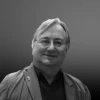Tiberius Aerospace's Sceptre TRBM 155HG 155mm artillery round has a ramjet in its nose that allows it to fly at supersonic speeds and gives it over four times the range of a conventional round.
When an artillery piece fires, there's a pretty impressive thump followed by the round vanishing off into the distance as it arcs toward its target. Now imagine that thump being followed by a whoosh as a ramjet in the round ignites, sending the shell accelerating to high altitude where it flies in a flat trajectory at supersonic speeds.
A conventional round fired from a NATO standard 155mm field gun has a range of up to 22 miles (35 km). Add in drag reduction technology, a short-assist rocket motor, and precision guidance system and this can be boosted to as much as 43 miles (70 km).
That's pretty good, but there's still a lot of room for improvement. One way of boosting the performance of an artillery round is to install a ramjet in it.

In a field gun, the shell is pushed by expanding gases from the burning propellant inside the barrel. Once the shell leaves the barrel, it's now coasting along on a ballistic arc at about 2,700 feet per second (830 meters per second) and falling as air friction takes over. Some advanced projectiles using rockets can add a boost, but that's only for a limited time.
A ramjet, on the other hand, turns a shell into a flying machine that is capable of sustained flight throughout most of its trajectory. A ramjet is essentially a jet engine without moving parts. Instead of using turbines to compress the air flow into the combustion chamber, the forward velocity does the compression.
Of course, the gun provides the initial acceleration that allows the ramjet to ignite. After that, it continuously burns fuel, generating sustained thrust over a longer duration compared to rocket motors. This significantly extends the range of the round, lets it fly at supersonic speeds, and at high altitudes.
Debuting on May 19, 2025 before the Future Artillery conference in London, the Sceptre TRBM 155HG 155mm ramjet-powered precision-guided artillery munition is designed to fit in any NATO standard 155mm artillery piece. Built around a small ramjet engine, it has a range of 93 miles (150 km), can fly at Mach 3.5, and can reach an altitude of 65,000 ft (19,800 m).

The altitude is particularly important because the Sceptre is a precision round with a hybrid GPS/inertial guidance system and AI-enhanced targeting correction that can hit a target with a margin of error of 16 ft (5 m). By flying at high altitude, this puts Sceptre (hopefully) out of the range of electronic warfare jamming devices. In addition, being able to preserve such precision means that it can get by with an explosive payload of only 11.5 lb (5.2 kg).
Sceptre is liquid fueled and is compatible with diesel, JP-4, and JP-8 fuels. Its just-in-time fueling system allows it to be stored for up to 20 years. The company says that it's undergone field tests in the US and claims the Sceptre is significantly cheaper than comparable-range missiles.
"Our mission is to deliver next-generation weapon systems of outstanding capability with precision, scale and efficiency," said Chad Steelberg, Founder and CEO of Tiberius Aerospace. "The public launch of Sceptre today, the first of our Ramjet (sic) munitions, meets this goal and fills a critical capability gap by delivering long-range precision-guided effects in a high-quality, cost-effective package. Tiberius’ innovation pipeline of products and services is engineered to catalyze a strategic leap in defense – empowering the UK, the US and their allies with unmatched agility, precision and rock-solid resilience."
Source: Tiberius Aerospace







